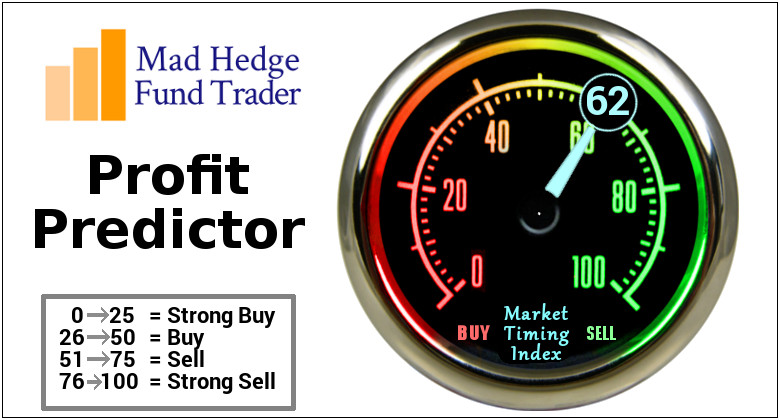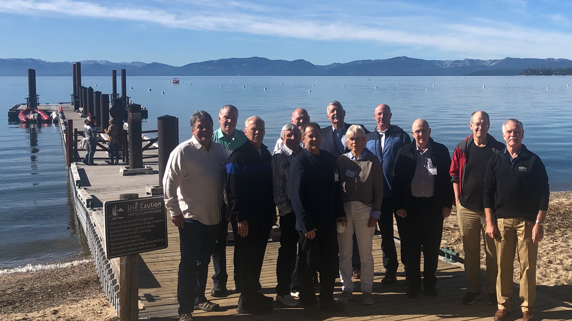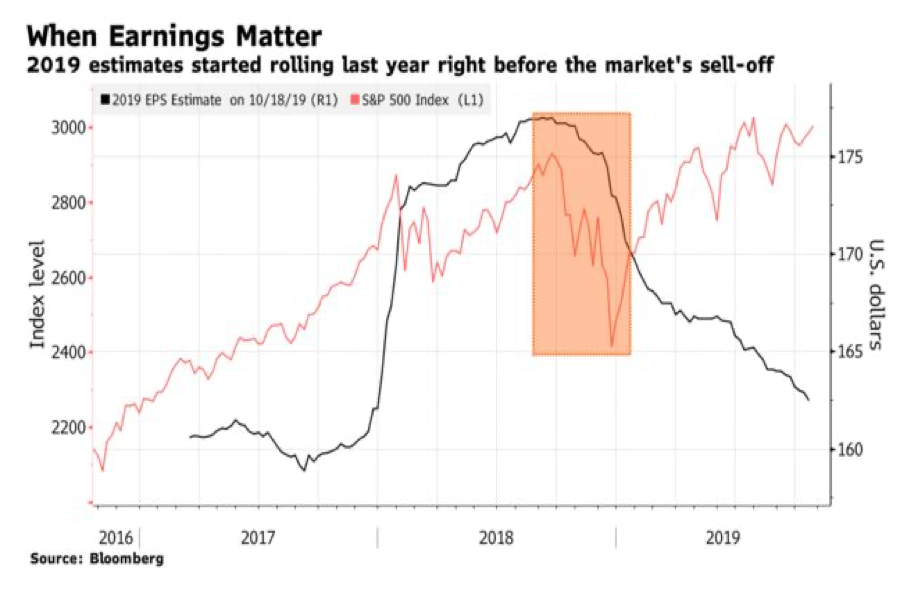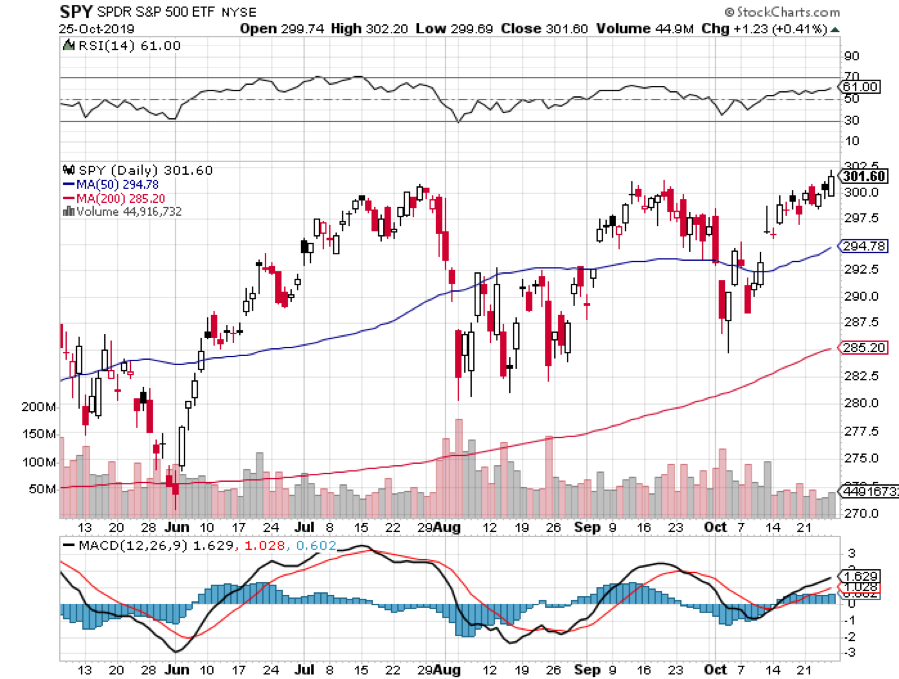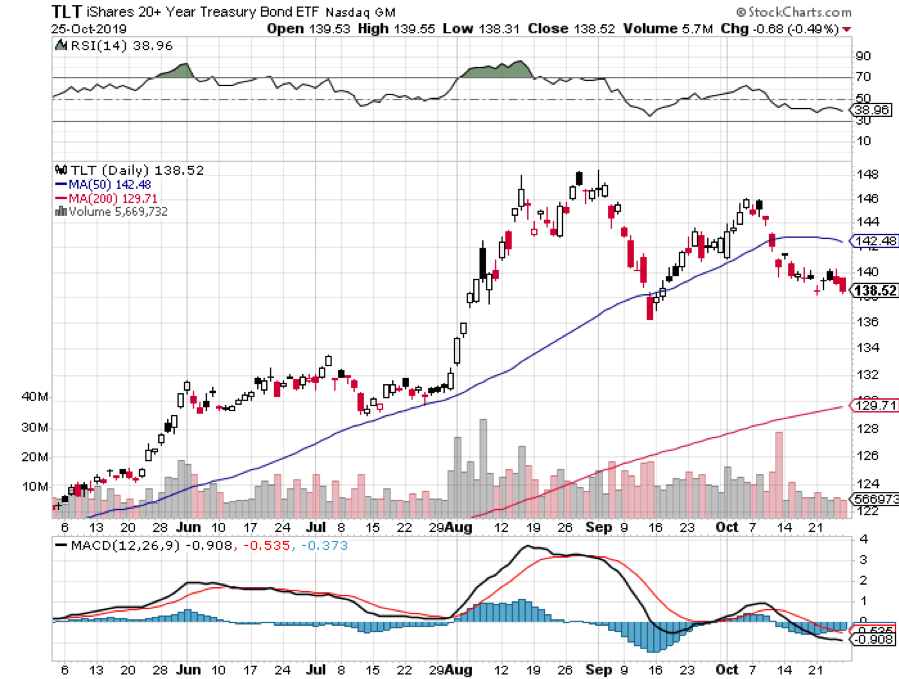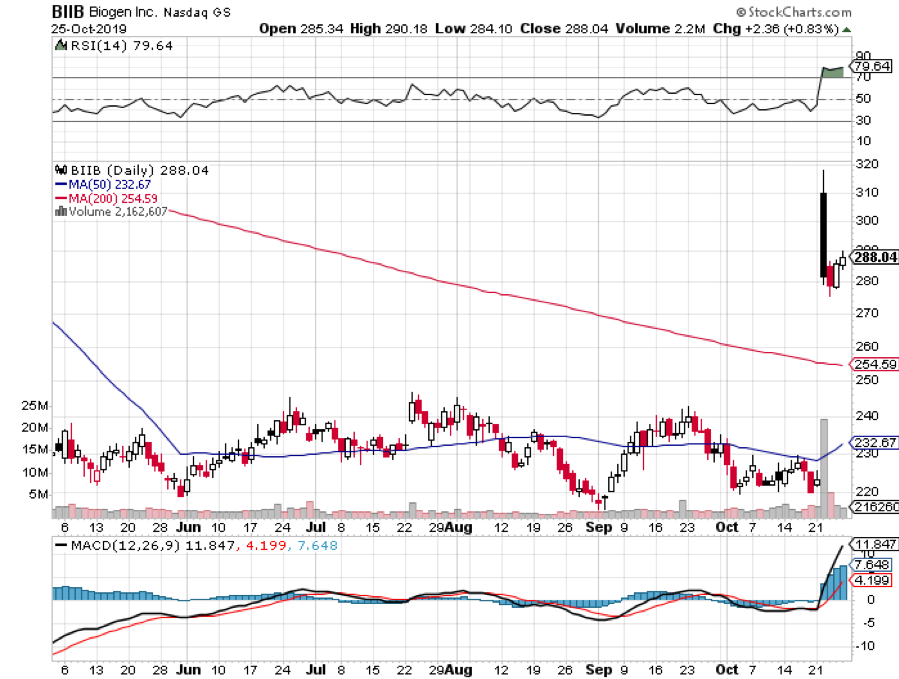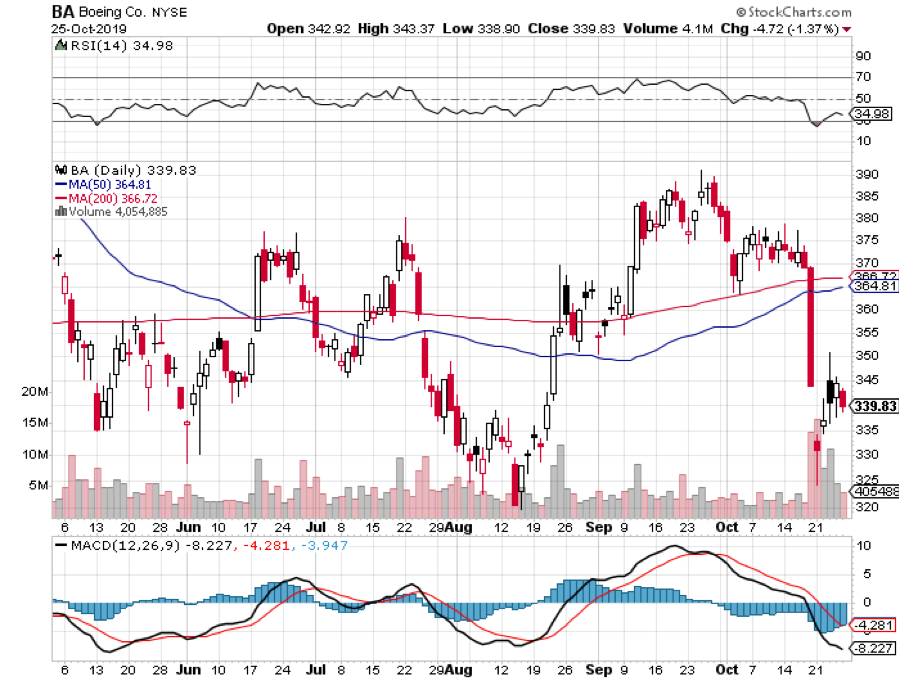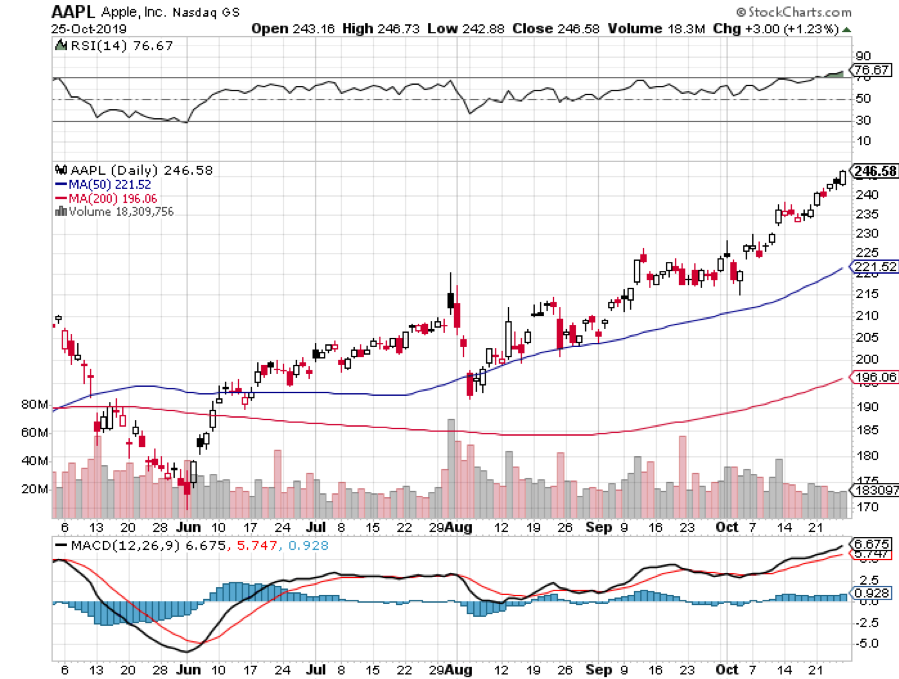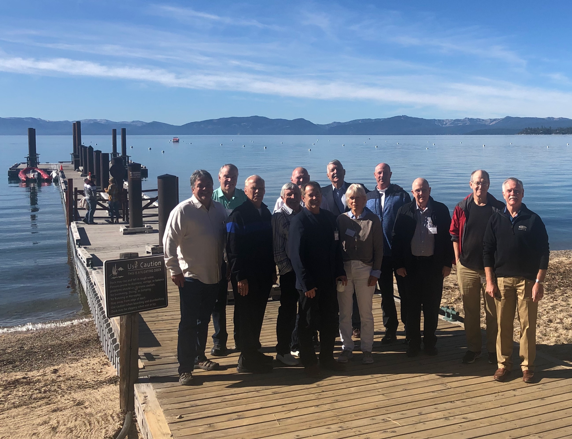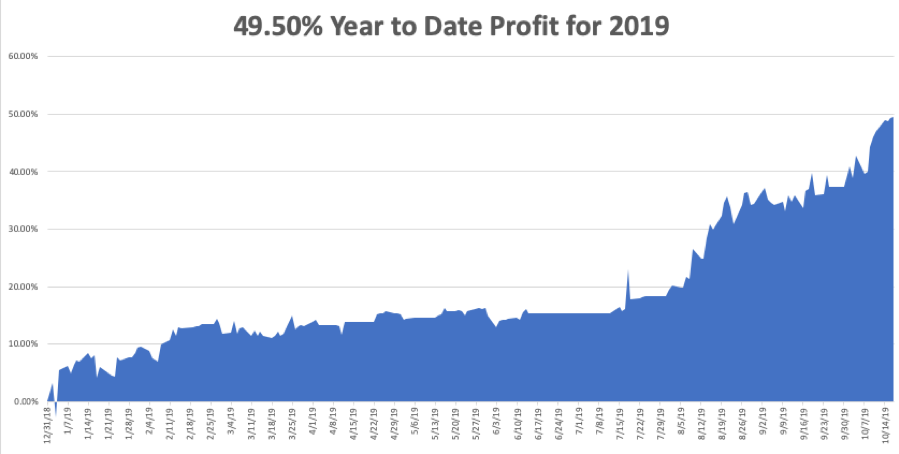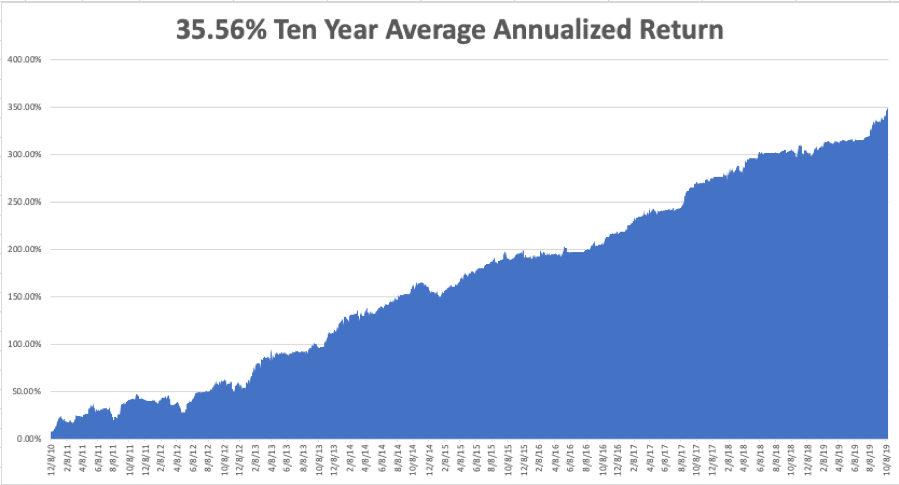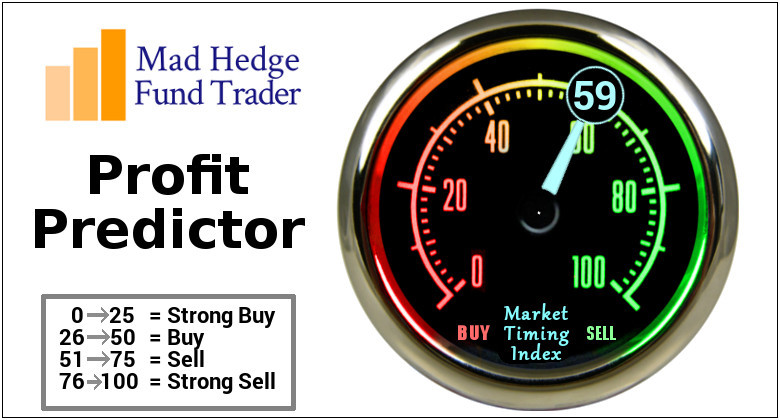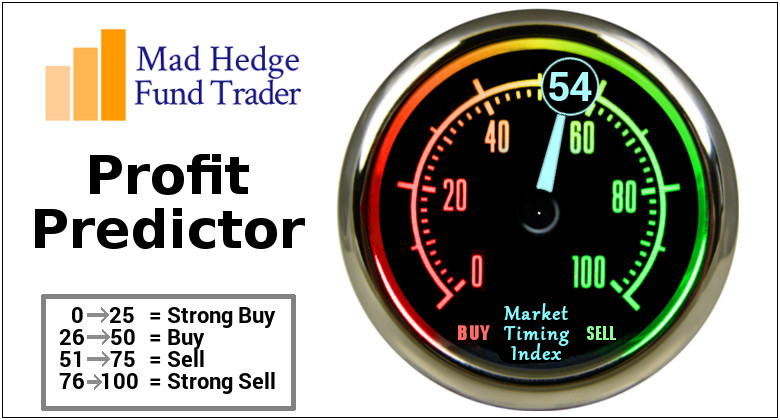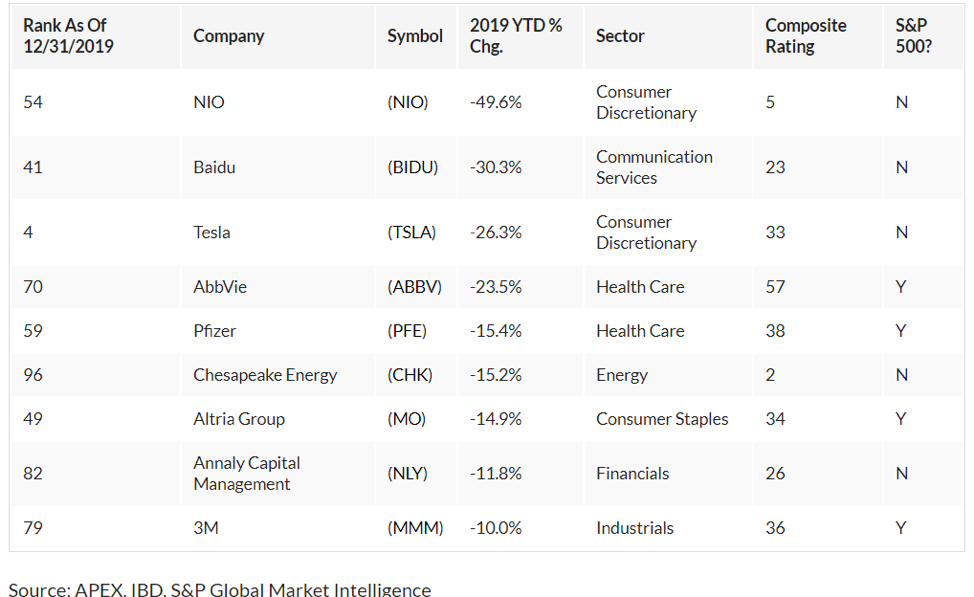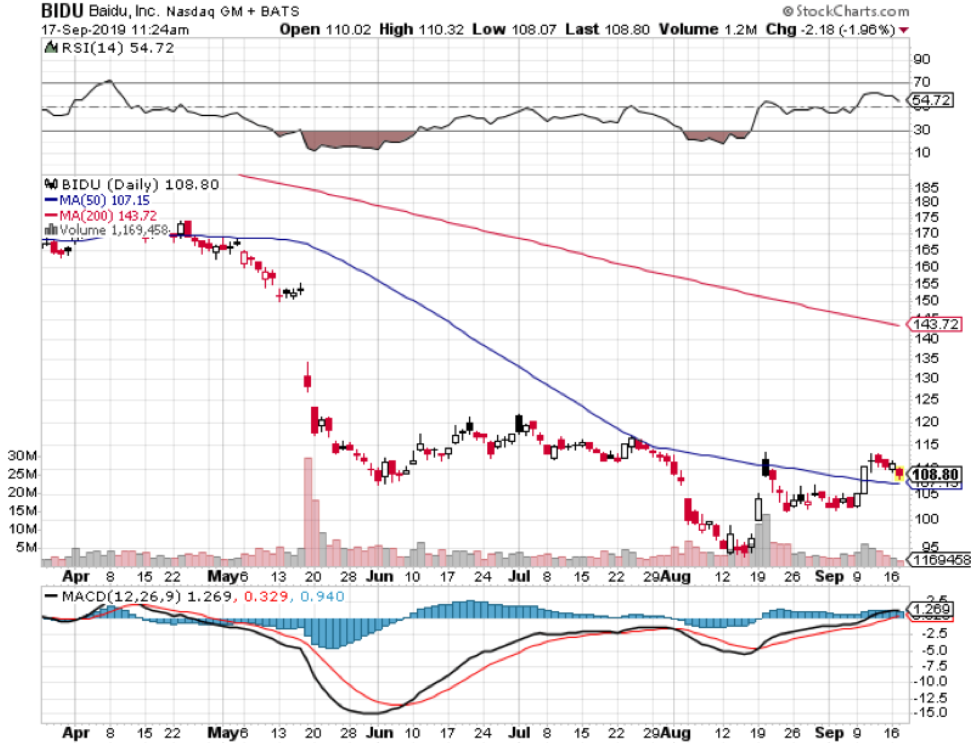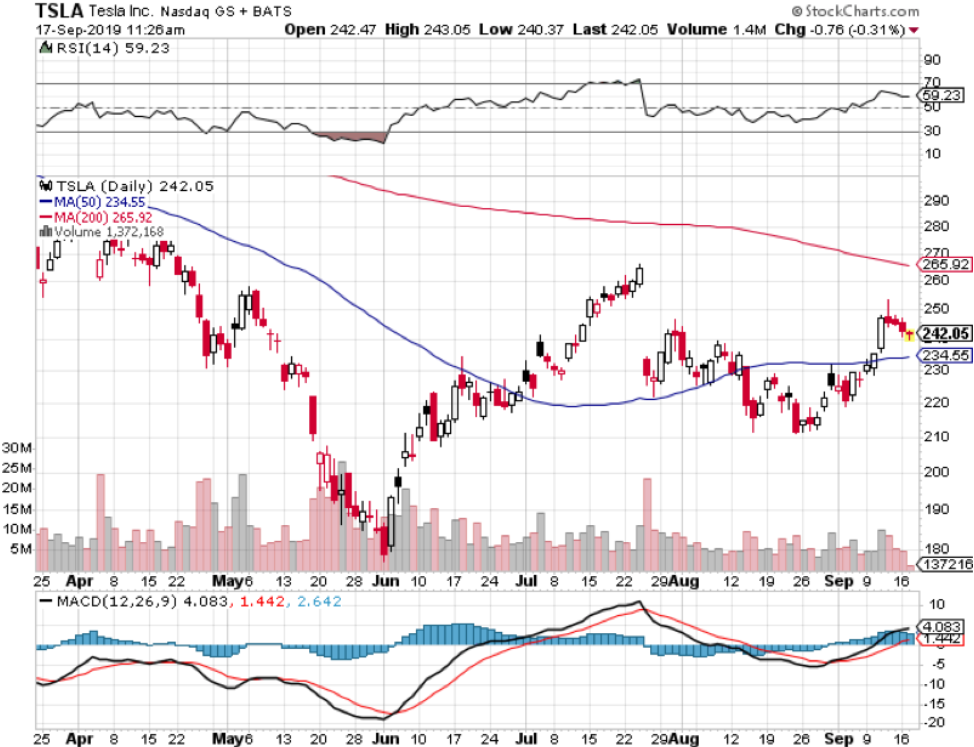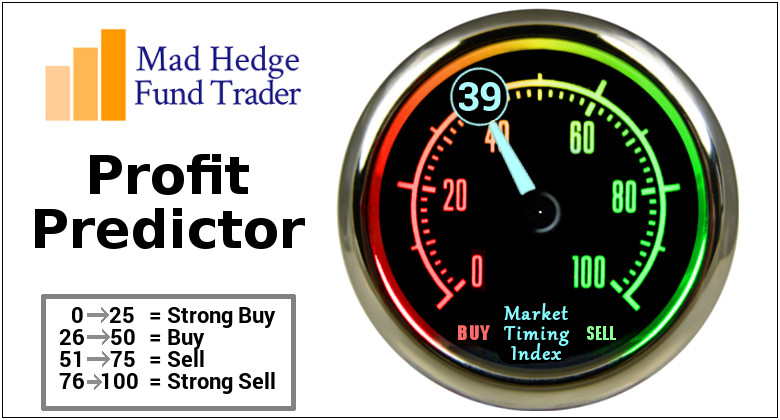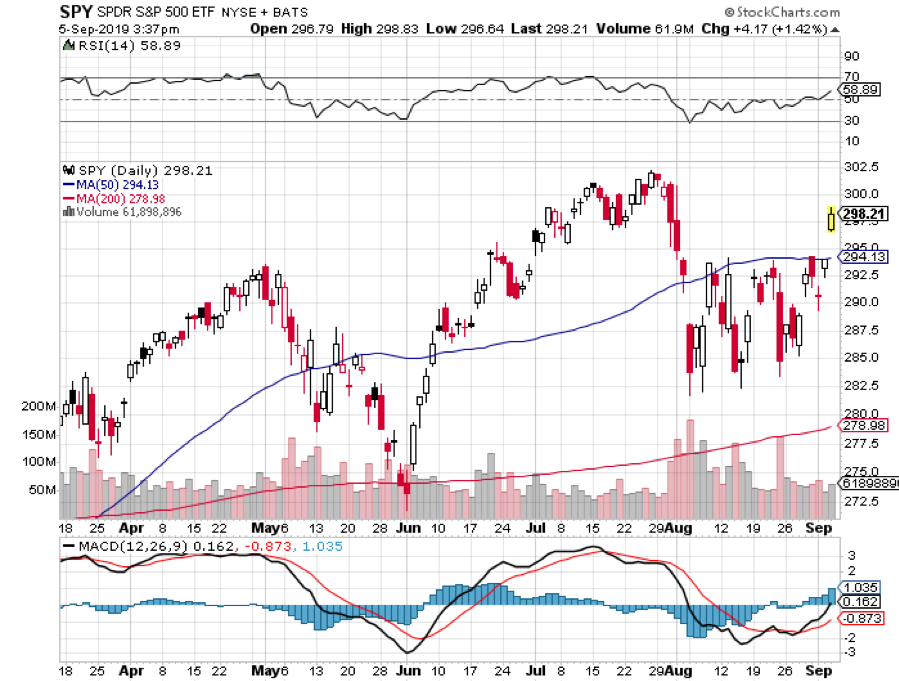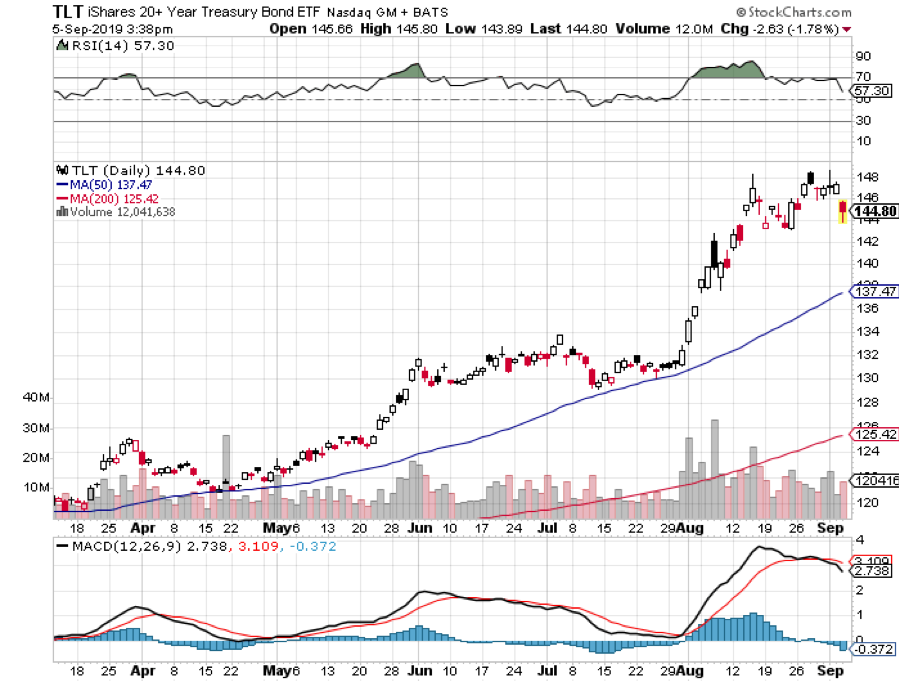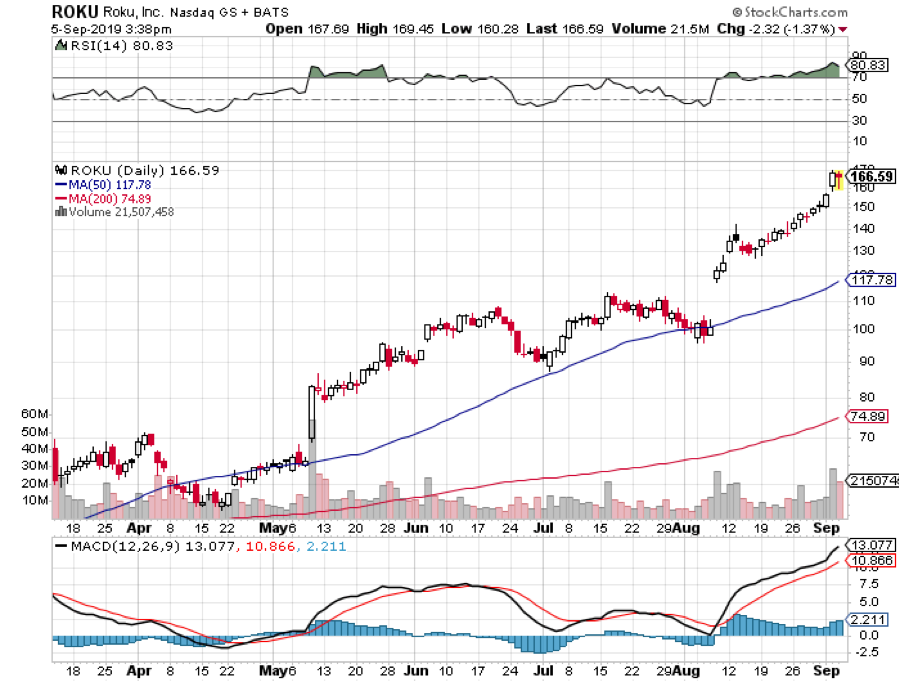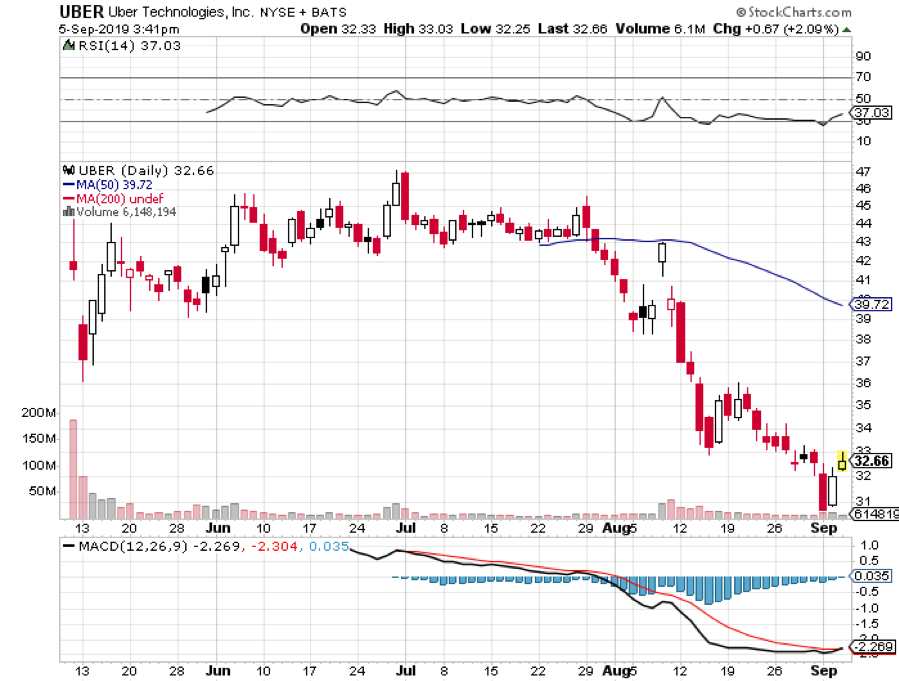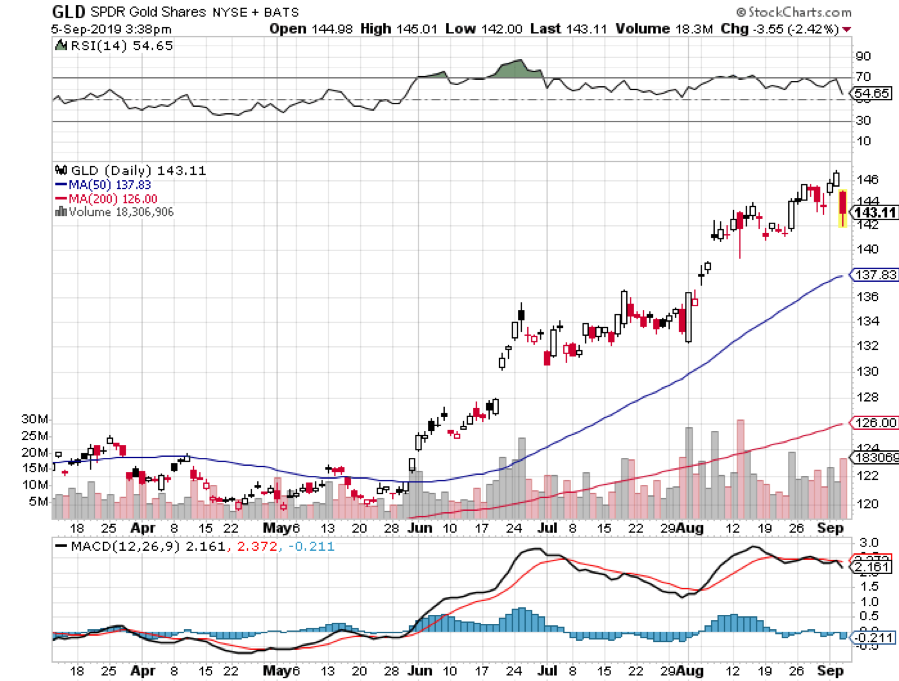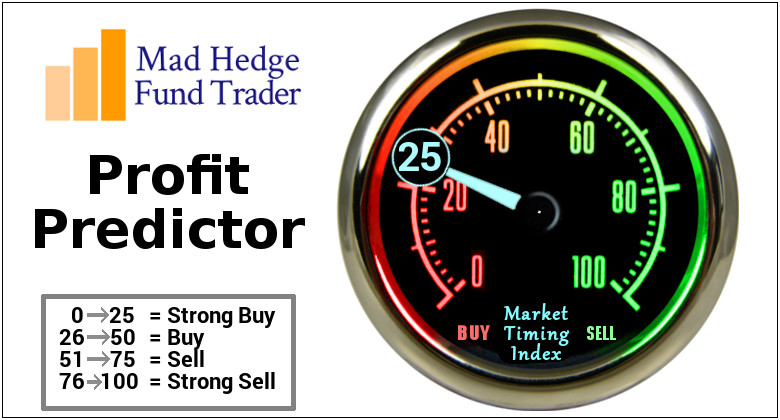Global Market Comments
October 28, 2019
Fiat Lux
Featured Trade:
(MARKET OUTLOOK FOR THE WEEK AHEAD, or DON’T FIGHT THE FED),
(BIIB), (IBB), (TSLA), (VIX), (BA), (AMZN), (AAPL), (MSFT), (GM)
Tag Archive for: (TSLA)
Don’t fight the Fed.
That was the overwhelming message of the market last week as it ground up to a new intraday all-time high. The economy may be going to hell in a handbasket. But as long as the Fed keeps lowering interest rates, stocks will go up, kicking and screaming all the way. It’s that simple.
America’s central bank will get its next chance to cut rates on Wednesday at 2:00 PM from the current overnight rate of 2.00%.
The big question is: Will the curse of the Fed continue? For the last two times the Fed lowered interest rates, substantial stock market selloffs ensued, the last one reaching a 7.5% haircut. We will know shortly.
The Mad Hedge Lake Tahoe Conference held last weekend was a blowout success, with a great time had by all. The weather couldn’t have been more perfect, with the lake waters calm and crystal clear. A day of market insights were delivered by me and Mad Hedge Technology Letter author Arthur Henry.
The only drawback was that several guests were prevented from going home by mandatory evacuations of several Bay Area cities and the closure of Interstate 80 going back to San Francisco. A handful (including me), had no electric power to return to when they got home.
I’ll share with you the most disturbing chart of the entire day showing the S&P 500 (SPY) has been grinding up to new highs, earnings forecasts have been absolutely falling off a cliff. Clearly, with the Volatility Index (VIX) back down to the lowly $12 handle, this is a market that is cruising for a bruising….someday.
Brexit failed again, taking the quagmire into its fourth year. An EC deal is postponed until January 31, but they’re really not interested at all. British pounds collapsing, creating a new “RISK OFF” leg worldwide. Prime minister Johnson has lost 5 consecutive parliamentary votes, an all-time record. When will he get the message?
US Capital Investment has ground to a halt, with business fixed investment down 1% YOY. No one knows where to put their money, inside the US or not, so they're doing nothing until it is sorted out. Call me when its over.
Biogen (BIIB) exploded to the upside on its FDA application for its new Alzheimer’s drug. Written off for dead six months ago, the company secretly kept working on Aducanumab until today’s blockbuster announcement. The drug reverses amyloid plaques thought responsible for Alzheimer’s. The stock is up an incredible 38% and has even dragged up the biotech ETF (IBB) 3%. Buy (BIIB) on dips.
Boeing soared on accelerated production timeline for 2020. Good thing I bought it just recently. The stock had been severely oversold on a $45 dive in two days. Buy (BA) on the dips.
The trade war is back in business with the Chinese demanding a total end to tariffs before any big ag buys. The rumors knocked stocks back on their heels. The Middle Kingdom also takes issue with recent Pence comments about basketball. Trump is definitely cornered. The trade war pain has gone global, with Europe taking the biggest hit. Some 40% of Germany’s GDP comes from exports. Growth will be on the skids for the next two years, even if a deal is done tomorrow.
Tesla shocked, bringing in a profit for only the third time in company history, and causing the stock to soar $55. The 100,000-unit production target within yearend looks within reach. Most importantly, they opened up a new supercharger station in Incline Village, Nevada! Tesla is now America’s most valuable car maker, beating (GM). The ideological Exxon-financed shorts have been destroyed once and for all. Buy (TSLA) on dips. There’s a ten bagger in this one.
Amazon put out a gloomy Christmas forecast on the back of a disappointing earnings report, crushing the shares by 7%. Looks like the trade war might cause a recession next year. Q3 revenues were great, up 24% to an eye-popping $70 billion. Good thing I took profits on the last option expiration. Poor Jeff Bezos, the abandoned son of an alcoholic circus clown, dropped $7 billion in net worth on Thursday. Buy (AMZN) on the dips.
The safest stock in the market, Microsoft, says it’s all about the cloud. Azure revenues grew a stunning 59% in Q3. (MSFT) is now up 37% on the year. Keep buying every dip, if we ever get another one.
Apple stock soared to new all-time high, taking the market cap just short of $1.1 trillion. iPhones are now less than 50% of total sales. The company is firing on all cylinders. My target is $200. Buy (AAPL) on dips.
Existing Home Sales dropped, down 2.2% in September to 5.38 million units. It’s shocking given the incredibly low level of interest rates. A shortage of supply?
This was a week for the Mad Hedge Trader Alert Service to stay level at an all-time high. With only one position left in Boeing (BA), not much else was going to happen.
My Global Trading Dispatch reached new pinnacle of +349.47% for the past ten years and my 2019 year-to-date accelerated to +48.42%. The notoriously volatile month of October stands at a blockbuster +11.91%. My ten-year average annualized profit held steady at +35.24%.
With my Mad Hedge Market Timing Index sitting around the neutral 62 level, it is too close to neutral to do anything dramatic.
The coming week is pretty non eventful of the data front. Maybe the stock market will be non-eventful as well.
On Monday, October 28 at 8:30 AM, the September Chicago Fed National Activity Index is published. Alphabet (GOOGL), and AT&T (T) report.
On Tuesday, October 29 at 9:00 AM, we get a new S&P Case Shiller National Home Price Index for August. Amgen (AMGN) and Pfizer (P) report.
On Wednesday, October 30, at 8:30 AM, the first read on US Q3 GDP is announced. At 10:30 AM, EIA Energy Stocks are published. Then at 2:00 PM, we obtain the FOMC interest rate decision. Apple (AAPL) and Facebook (FB) report.
On Thursday, October 31 at 8:30 AM, Weekly Jobless Claims are out. US Steel (X) reports.
On Friday, November 1 at 8:30 AM, the October Nonfarm Payroll Report is released. AbbVie (ABBV) and ExxonMobile (XOM) report.
The Baker Hughes Rig Count follows at 2:00 PM.
As for me, I’ll be driving back home from Lake Tahoe. I wonder if I’ll make it.
Good luck and good trading.
John Thomas
CEO & Publisher
The Diary of a Mad Hedge Fund Trader
Mad Hedge Technology Letter
October 23, 2019
Fiat Lux
Featured Trade:
(WILL A.I. SAVE US?),
(TSLA), (AMZN), (FB)
Anti-A.I. physicist Professor Stephen Hawking was a staunch supporter of preserving human interests against the future existential threat from machines and artificial intelligence (A.I.).
He was diagnosed with motor neuron disease, more commonly known as Lou Gehrig's disease in 1963 at the age of 21 and sadly passed away March 14, 2018 at the age of 76.
Famed for his work on black holes, Professor Hawking represented the human quest to maintain its superiority against quickly advancing artificial acculturation.
His passing was a huge loss for mankind as his voice was a deterrent to A.I.'s relentless march to supremacy. He was one of the few who had the authority to opine on these issues.
Gone is a voice of reason.
Critics have argued that living with A.I. poses a red alert threat to privacy, security, and society as a whole. Unfortunately, those most credible and knowledgeable about A.I. are tech firms.
They have shown that policing themselves on this front is remarkably unproductive.
Mark Zuckerberg, CEO of Facebook (FB), has labeled naysayers as "irresponsible" and dismissed the threat. After failing to prevent Russian interference in the last election, he is exhibiting the same defensive posture translating into a de facto admission of guilt. His track record of shirking accountability is becoming a trend leading him to allow politicians to post untrue marketing material for the 2020 U.S. election.
Share prices will materially nosedive if A.I. is stonewalled and development stunted. Many CEOs who stake careers on doubling or tripling down on A.I. cannot see it die out. There is too much money to lose – even for Mark.
The world will see major improvements in the quality of life in the next 10 years. But there is another side to the coin which Zuckerberg and company refuse to delve into...the dark side of technology.
Tesla's (TSLA) CEO Elon Musk has shared his anxiety about robots flipping the script on humans. Elon acknowledges that A.I. and autonomous vehicles are important factors in the battle for new technology. The winner is yet to be determined as China has bet the ranch with unlimited resources from the help of Chairman Xi and state sponsored institutions.
The quagmire with China has been squarely centered around the great race for technological supremacy.
A.I. is the ultimate X factor in this race and whoever can harness and develop the fastest will win.
Musk has hinted that robots and humans could merge into one species in the future. Is this the next point of competition among tech companies? The future is murky at best.
Hawking's premise that evolution has inbuilt greed can be found in the underpinnings of America's economic miracle.
Wall Street has bred a culture that is entirely self-serving regardless of the bigger system in which it finds itself.
Most of us are participating in this perpetual money game chase because our system treats it as a natural part of life. A.I. will help a select few do well in this paper chase to the detriment of the majority.
Quarterly earnings performance is paramount for CEOs. Return value back to shareholders or face the sack in the morning. It's impossible to convince anyone that America's capitalist model is deteriorating in the greatest bull market of all time.
Wall Street has an insatiable hunger for cutting-edge technology from companies that sequentially beat earnings and raise guidance. Flourishing technology companies enrich the participants creating a Teflon-like resistance to downside market risk.
The issue with Professor Hawking's work is that his timeframe is too far in the future. Professor Hawking was probably correct, but it will take 25 years to prove it.
The world is quickly changing as science fiction becomes reality.
People on Wall Street are a product of the system in place and earn a tremendous amount of money because they proficiently execute a specialized job. Traders are busy focusing on how to move ahead of the next guy.
Firms building autonomous cars are free to operate as is. Hyper-accelerating technology spurs on the development of A.I., machine learning, and enhanced algorithms. Record profits will topple and investors will funnel investments back into an even narrower grouping of technology stocks after the weak hands are flushed out.
Professor Hawking said we need to explore our technological capabilities to the fullest in order to avoid extinction. In 2018, exploring these new capabilities still equals monetizing through the medium of products and services.
This is all bullish for equities as the leading companies associated with A.I. to reap the benefits.
And let me remind you that technology is still the least regulated industry on the planet even with all the recent hoopla.
It is having its cake and is eating it too. Hence, technology is starting to cross over into other industries demonstrating the powerful footprint tech has extracted in economics and the stock market.
The only solution is keeping companies accountable by a function of law or creating a third-party task force to regulate A.I.
In 2019, the thought of overseeing robots sounds crazy.
The future will be here sooner than you think.
Global Market Comments
October 1, 2019
Fiat Lux
Featured Trade:
(LAUNCHING THE NEW MAD HEDGE BIOTECH AND HEALTHCARE LETTER)
(THE NEW AI BOOK THAT INVESTORS ARE SCRAMBLING FOR),
(GOOG), (FB), (AMZN), MSFT), (BABA), (BIDU),
(TENCENT), (TSLA), (NVDA), (AMD), (MU), (LRCX)
Mad Hedge Technology Letter
September 18, 2019
Fiat Lux
Featured Trade:
(WHY YOU SHOULD AVOID CHINESE TECH IPOS LIKE THE PLAGUE)
(TSLA), (BIDU), (NIO)
Millennials usually stick with the stocks that they know.
That’s all fine until it takes a bite out of their wallet.
Some of these decisions based on the products that represent this generation have been stock market disasters of late.
Sadly, many Millennials were too young to catch the ride up for Tesla.
Many older generations got into the stock at $20, $40 and $100 and rode the elevator up with an ultra low-cost basis.
I can’t say the same for Millennials as many came of age and finally had the money to splurge for shares after the stock had plateaued.
This was a cringe-worthy lesson that just because a company has a great product doesn’t always mean the stock is just as great.
Electric Vehicles (EV) are front and center of the Millennial consciousness and that also meant that many scooped up NIO which is the Chinese version of Tesla.
After peaking at $10 in March, the stock is now trading at $3.
Many Chinese IPOs that go public in New York are of a pump-and-dump mentality as they shower the public with losses.
In fact, many Chinese IPOs only have the goal of going public without the goal of doing much more after that.
NIO has yet to be found out completely, but the Chinese economy is hurting and the Chinese consumer has reigned back the purse strings as times become lean.
As we head into a global slow down, electric car companies that lose boatloads of money will be in the firing line for value revaluations.
In fact, I would urge any reader to steer clear of any Chinese company traded on the public markets because of opaque financials that are intentionally obfuscated.
Baidu is another favorite of the Millennial generation pigeonholed as the “Google search of China.”
That moniker is an impressive catchphrase but it doesn’t do much to rejuvenate the large loss in market share that Baidu has ceded to Alibaba and WeChat platforms.
Baidu has lost its mojo and is bleeding usership and it will be hard to reverse it as Baidu never evolved with the changing trends of Chinese consumers.
Baidu peaked in April 2018, at $250 and is now trading at less than $108 and the slide isn’t over yet as Baidu has no adequate response to the domination of the other Chinese tech behemoths.
Yes, many tech trends have legs and are secular shifts that have major ramifications to the global economy.
But the devil is in the details and peels back the layers to be aware of developments such as CEO of Tesla Elon Musk building an American Gigafactory in Shanghai at the worse time in economic history as a legitimate canary in the coal mine.
As robust as the Chinese consumer has been, the latest contagion of African swine flu that culled a major amount of Chinese pigs has raised the price of pork by over 45%.
Chinese consumers are hyper-aware of these economic developments in the year of the pig.
After a massive ride up in Chinese tech shares and electric car story that took many investors breath away, we are at the beginning of a meaningful revaluation that will change the narrative moving forward.
Timing is everything in this game.
Global Market Comments
September 6, 2019
Fiat Lux
Featured Trade:
(SEPTEMBER 4 BIWEEKLY STRATEGY WEBINAR Q&A),
(INDU), (FXY), (FXB), (USO), (XLE), (TLT), (TBT),
(FB), (AMZN), (MSFT), (DIS), (WMT), (IWM), (TSLA), (ROKU), (UBER), (LYFT), (SLV), (SIL)
Below please find subscribers’ Q&A for the Mad Hedge Fund Trader September 4 Global Strategy Webinar broadcast from Silicon Valley with my guest and co-host Bill Davis of the Mad Day Trader. Keep those questions coming!
Q: If Trump figures out the trade war will lose him the election; will he stop it?
A: Yes, and that is a risk that hovers over all short positions in the market at all times these days because stocks will soar (INDU) when the trade war ends. We now have 18 months of share appreciation that has been frustrated or deferred by the dispute with China. The problem is that the US economy is already sliding into recession and it may already be too late to turn it around.
Q: Do you see the British pound (FXB) dropping more on the Brexit turmoil? Do you think the UK will stay in the EU?
A: If the UK ends Brexit through an election, then the pound should recover from $1.19 all the way back up to $1.65 where it was before Brexit happened four years ago. If that does happen, it will be one of the biggest trades of the year anywhere in the world, going long the British pound. This is how I always anticipated it would end. I was in England for the Brexit vote and I was convinced that if they held the election the next day, it would have lost. The only reason it won was because nobody thought it would— a lot like our own 2016 election. That brings Britain back into the EEC, saves Europe, and has a positive impact on markets globally. So, this is a big deal. Not to do so would be economic suicide for Britain, and I think wiser heads will prevail.
Q: Do you think it’s a good idea for Saudi ARAMCO to go public in Japan as reports suggest?
A: When the Arabs want to get out of the oil business (USO), (XLE), you want to also. That’s what the sale of ARAMCO is all about. They’re going to get a $1 trillion or more valuation, raising $100 billion in cash. And guess who the biggest investors in alternative energy in California are? It’s Saudi Arabia. They see no future in oil, nor should you. This is why we’ve been negative on the sector all year. By the way, bankruptcies by frackers in the U.S. are at an all-time high, another indicator that low oil prices can’t be tolerated by the US industry for long.
Q: Is it time to buy the ProShares Ultra Short 20 year Plus Treasury Bond Fund (TBT)?
A: No, not yet; I think we’re going to break 1.33% — the all-time low yield for the (TLT) will probably be somewhere just below 1.00%. We probably won’t go to absolute zero because we still have a growing economy. The countries that already have negative interest rates have shrinking economies or are already in recession, like Germany or Great Britain can justify zero rates.
Q: Are you going to run all your existing positions into expiration?
A: I’m going to try to—it’s only 12 days to expiration, and we get to keep the full profit if we do. As long as the market is dead in the middle here, there are no other positions to put on, no extreme low to buy into or extreme high to sell into. It’s a question of letting this sort of nowhere-trend play out, but also there's nothing else to buy, so there is no need to raise cash. So, we’re 60% invested now and we’re going to try running as many of those into expiration as we can. Looks like all the long technology positions are safe (FB), (AMZN), (MSFT), (DIS). The only thing we’re pressing here are the shorts in Walmart (WMT) and Russell 2000 (IWM).
Q: Do you think it’s a good idea for Tesla (TSLA) to build another Gigafactory in Shanghai, China during a trade war? Will this blow up in Elon’s face?
A: I don’t think so because the Chinese are desperate for the Tesla technology and they just gave Tesla an exemption on import duties on all parts that need to go there to build the cars. So, that’s a very positive development for Tesla and I believe the stock is up about $10 since that news came out.
Q: Will Roku (ROKU) ever pull back? Would you buy it up here?
A: No, we recommended this thing last year at $40; it’s now up to $165, and up here it’s just wildly overbought, in chase territory. Of course, the reason that’s happening is that the big concern last year was Amazon wiping out Roku, yet they ultimately ended up partnering with Roku, and that’s worth about a 400% gain in the stock. You know the second you get into this, it’s over. There are just too many better fish to fry in the technology area.
Q: What happens if our existing Russell 2000 (IWM) September 2019 $153-$156 in-the-money vertical BEAR PUT spread Russell 2000 position closes between $156 and $153?
A: You lose money. You will get the Russell 2000 shares put to you, or sold to you at $153.00, which means you now own them, and you’ll get a big margin call from your broker for owning the extra shares. If ever it looks like we’re getting close to the strike price going into expiration, I come out precisely because of that risk. You don’t want random chance dictating whether you’re going to make money in your position or not going into expiration. If you’re worried about that, I would get out now and you can still come out with a nice profit. Or, you can always wait for another down day tomorrow.
Q: Is it time to get super aggressive shorting Lyft (LYFT) or Uber (UBER) when they openly admit that they won’t make a profit anytime in the near future?
A: The time to short Uber (UBER) and Lyft was at the IPO when the shares became available to sell. Down here I don’t really want to do very much. It’s late in the game and Uber’s down about one third from its IPO price. We begged people to stay away from this. It’s another example where they waited for the company to go ex-growth before it went public, but it didn’t leave anything for the public. It was a very badly mishandled IPO—it’s now at $31 against a $45 IPO price and was at a new all-time low just 2 days ago. You knew when they offered the drivers shares, the thing was in trouble. Sometime this will be a buy, but not yet. Go take a long nap first.
Q: Is the fact that rich people are hoarding cash a good indicator that a recession is approaching?
A: Yes, absolutely. Bonds yielding 1.45% is also an indication that the wealthy are hoarding cash from other investment and parking it in US treasury bonds. I went to the Pebble Beach Concourse d’ Elegance vintage car show a few weeks ago and all of the $10 million plus cars didn’t sell, only those priced below $100,000. That is always a good indicator that the wealthy are bailing ahead of a recession. If you can’t get a premium price for your vintage Ferrari, trouble is coming.
Q: Argentina just implemented currency controls; is this the start of a rolling currency crisis among emerging nations?
A: No, I believe the problems are unique to Argentina. They’ve adopted what is known as Modern Momentary Theory—i.e. borrowing and printing money like crazy. Unfortunately, this is unsustainable and results in a devalued currency, general instability, and the eventual hanging of their leaders from the nearest lamppost. This is exactly the same monetary policy that the Trump administration has been pursuing since he came into office. Eventually, it will lead to tears, ours, not his.
Q: Is the new all-electric Porsche Taycan a threat to Tesla?
A: No, it’s not. Their cheapest car is $150,000 and it gets one third less range than Tesla does. It’s really aimed at Porsche fanatics, and I doubt they will get outside their core market. In the meantime, Tesla has taken over the middle part of the electric market with the Model 3 at $37,000 a car. That’s where the money is, and Porsche will never get there.
Q: How will the US pull out of recession if the interest rates are at or below zero?
A: It won’t—that’s what a lot of economists are concerned about these days. With interest rates below zero, the Fed has lost its primary means to stimulate the economy. The only thing left to do is use creative means like feeding the economy with currency, which Europe has been doing for 10 years, and Japan for 30, with no results. That’s another reason to not allow rates to get back to zero—so we have tools to use when we go into a recession 12-24 months from now.
Q: What’s the best way to buy silver?
A: The ETF iShares Silver Trust (SLV) and, if you want to be aggressive, the silver miners with the Global X Silver Miners ETF (SIL).
Q: Have global central banks ruined the western economic system as we know it for future generations?
A: They may have—mostly by printing too much money in the last 10 years in order to get us out of recession. This hasn’t really worked for Europe or Japan, mind you, though who knows how much worse off they would be if they hadn’t. What it did do here is head off a Great Depression. If we go back to money printing in a big way, however, and it doesn’t work, we will not have prevented a Great Depression so much as pushed it back 10 or 15 years. That’s the great debate ongoing among economists, and it will eventually be settled by the marketplace.
Global Market Comments
September 4, 2019
Fiat Lux
Featured Trade:
(HOW FREE ENERGY WILL POWER THE COMING ROARING TWENTIES),
(SPWR), (TSLA)
(ARE YOU IN THE 1%?),
(SNE), (HMC), (TLT)
Legal Disclaimer
There is a very high degree of risk involved in trading. Past results are not indicative of future returns. MadHedgeFundTrader.com and all individuals affiliated with this site assume no responsibilities for your trading and investment results. The indicators, strategies, columns, articles and all other features are for educational purposes only and should not be construed as investment advice. Information for futures trading observations are obtained from sources believed to be reliable, but we do not warrant its completeness or accuracy, or warrant any results from the use of the information. Your use of the trading observations is entirely at your own risk and it is your sole responsibility to evaluate the accuracy, completeness and usefulness of the information. You must assess the risk of any trade with your broker and make your own independent decisions regarding any securities mentioned herein. Affiliates of MadHedgeFundTrader.com may have a position or effect transactions in the securities described herein (or options thereon) and/or otherwise employ trading strategies that may be consistent or inconsistent with the provided strategies.

